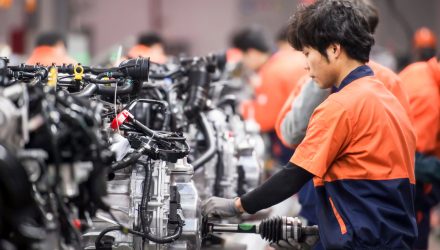Between the U.S.-China trade war and the onset of the Covid-19 pandemic, many companies moved their supply chains out of China and to neighboring countries, such as Vietnam and India.
Now, however, as the vaccine rollout continues and the pandemic’s epicenters shift, causing supply chain disruptions once more, these same companies may pivot back to China, according to Pinpoint Asset Management chief economist Zhang Zhiwei.
COVID-19 Exacerbates Existing Trends
The flight from China had begun before COVID arrived. The U.S.-China trade war caused many companies, particularly tech firms, to withdraw from Chinese soil.
Companies that had previously left, as well as those planning to leave, might be forced to return, or else face shuttered production lines as new variant strains of of the disease continue to impact South Asian countries.
After a pronounced shortage of superconductors, further disruptions of production could have wide-reaching effects.
“Before the pandemic, we saw factories moving out of China — Samsung, Foxconn these big name companies — setting up factories in Vietnam, India,” said Zhiwei.
Major companies like Foxconn, a Taiwanese electronic contract manufacturer and major supplier for Apple, have been forced to close factories and facilities both India and Vietnam.
“This could put the relocation of supply chains on hold for quite some time. The key issue here is that international travel is suspended, so multinational companies can’t send their staff to India and Vietnam to set up new factories,” Zhiwei said.
China’s manufacturing sector could ramp up to accommodate the unfilled demand and fill shortfalls in the supply chain, believes Zhiwei, but much hinges on how long Covid-19 will continue to impact India and Vietnam.
As things currently stand, China’s export growth ranges between 20% and 40% a month, a number that could drop in the second half of the year if factories re-open in India and Vietnam.
However, if those facilities remain closed for a long time, “we could see this kind of 20%, 30% export growth (in China) to continue into next year,” said Zhiwei.
A ramp-up in Chinese tech manufacturing could lead to positive growth in the technology sector, especially in the 5G and semiconductor industries.
The KraneShares CICC China 5G and Semiconductor ETF (KFVG) tracks the performance of the CICC China 5G and Semiconductor Leaders Index. KFVG features “access to China’s 5G and semiconductor companies that offer a potential source of uncorrelated, long-term growth, and exposure to Chinese technology companies listed in Mainland China, Hong Kong, and the United States” per the KraneShares website.
Tech manufacturers make up much of KFVG’s portfolio. The ETF currently carries Foxconn at a 6.81% weight, for example.
KFVG has an expense ratio of 0.065%.
For more news, information, and strategy, visit the China Insights Channel.

